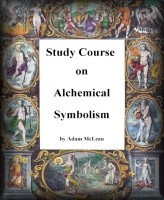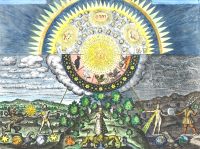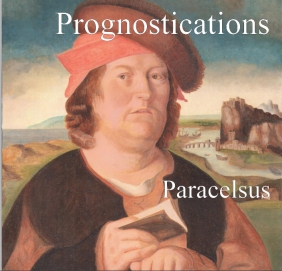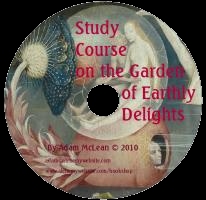|
|
The links between alchemical iconography and Emblem books. Alchemical iconography first appeared in manuscript material from around the beginning of the 15th Century and probably drew on the symbolism and allegories in alchemical texts of that period. Emblem books first appeared in the early 16th Century and initially were illustrated with woodcuts but later, from the end of the 16th Century and into the 17th century, copperplate engravings were often used. Emblem books were a popular literary form, in which an emblematic image was presented with a motto and verse, and these presented religious, philosophical, moral, mythological and even political and social satire. These drew on the tradition of paintings and illustrations illuminating manuscripts. Alchemical iconography would appear to be connected more closely with the alchemical text and ideas it was supposedly illustrating. Initially illustrations consisted of drawings and paintings in manuscript and from the mid-16th century in the medium of woodcuts and copperplate engravings in printed books. Alchemical manuscripts often were illustrated naively by the alchemist author himself, or by a copyist. Some of these copyists were very talented artists, as we see, say in the Splendor solis group of manuscripts. When alchemical works were printed with illustrations included, this required the work of professional woodcut artists and engravers, and these were often the same people who worked on emblem book illustrations. So it is not surprising that we should see some links between the emblems in alchemical books and the images in the more general emblem literature. Often such artists reused material and stock images that they had created and were comfortable with. For these reasons, it is perhaps important, when contextualising alchemical imagery, to realise that it drew on and also influenced the wider and more popular emblem literature contemporary with it. Here we will document just a few examples. One of the best examples of this is the use, as illustrations in the books of Goossen van Vreeswyk in the 1670's, of the engraved plates from Jacob Cats Alle de Wercken, Dordrecht, 1659 which had been doctored by engraving alchemical signs onto the original copperplates.
|
 Study Courses
Study Courses Alchemical, astrological and emblematic art prints  Alchemy and art  Art books Series  Study course on Bosch's Garden of Earthly Delights New Hieronymus Bosch Website |